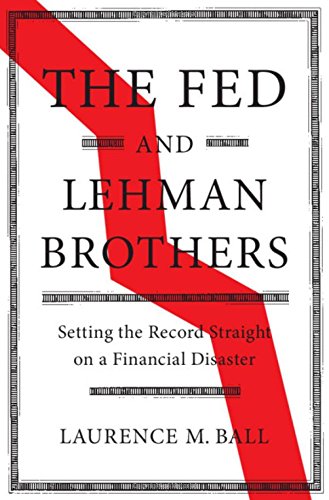Laurence M. Ball, a professor of economics at Johns Hopkins University, is convinced that (1) the Federal Reserve Bank had the authority to rescue Lehman in 2008 and that (2) in any event, the beliefs of Fed officials about their legal authority were not the real reason they chose not to rescue the firm. In The Fed and Lehman Brothers: Setting the Record Straight on a Financial Disaster (Cambridge University Press, 2018), based on publicly available sources, Ball makes his case.
Q1 hedge fund letters, conference, scoops etc, Also read Lear Capital: Financial Products You Should Avoid?
The Fed and Lehman Brothers: Setting the Record Straight on a Financial Disaster by Laurence M. Ball
After a deal to sell Lehman to Barclays fell apart on September 14, what could the Fed have done to avert Lehman’s bankruptcy the next day? Actually, as Ball points out, not all of the Lehman enterprise failed on the 15th. LBHI, the holding company, filed for bankruptcy, along with most of its subsidiaries. But one subsidiary did not: Lehman Brothers Inc., the company’s broker-dealer in New York. “The Fed kept LBI in business from September 15 to September 18 by lending it tens of billions of dollars. After that, Barclays purchased part of LBI and the rest was wound down by a court-appointed trustee.”
The usual explanation for the Fed’s refusal to lend to LBHI was that, under Section 13(3) of the Federal Reserve Act, the loan had to be “secured to the satisfaction of the Reserve Bank.” Fed officials took this to mean that the Fed cannot make a loan if there is a significant risk that it will lose money on the deal. This provision did not require that Lehman be solvent, but “examining Lehman’s solvency helps us to understand what assistance the firm needed to survive its liquidity crisis, and to assess its longer-term prospects.” Ball contends that, with mark-to-market valuation in the distressed markets of September 2008, Lehman was near the edge of solvency, so “it was probably solvent based on its assets’ fundamental values.” The problem, of course, was not solvency but liquidity. Lehman, Ball calculates, “would have needed about $84 billion of assistance to stay in operation for a period of weeks or months” while it looked for long-term solutions to its problems.
Ball argues that the real villain in Lehman’s bankruptcy was Hank Paulson, that he insisted on the bankruptcy and that Fed officials acquiesced. Moreover, he suggests, neither Paulson nor Fed officials fully appreciated the severe damage to the financial system that Lehman’s bankruptcy would cause.
Ball supports his hypothesis with ample documentation. Whether readers come away convinced that the Fed made a grievous error in not being the lender of last resort to Lehman will probably depend on their view of the Fed. And even if future Fed leaders “take the Lehman lesson to heart,” they may be hamstrung in their actions. The Dodd-Frank Act revised Section 13(3) to limit the Fed’s lending authority and to make all lending subject to the approval of the Secretary of the Treasury, a political appointee.
Article by Brenda Jubin, Reading The Markets

